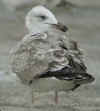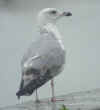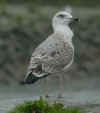 Yellow-legged
Gull- Geelpootmeeuw (L. michahellis): 2cy October
Yellow-legged
Gull- Geelpootmeeuw (L. michahellis): 2cy October
(last update: 08 december 2003)
YLG
1cy May
YLG
1cy June
YLG
1cy July
YLG 1cy August
YLG 1cy September
YLG 1cy October
YLG 1cy November
YLG 1cy December
YLG
2cy January
YLG 2cy February
YLG 2cy March
YLG 2cy April
YLG 2cy May
YLG 2cy June
YLG 2cy July
YLG 2cy August
YLG 2cy September
YLG 2cy October
YLG 2cy November
YLG 2cy December
YLG
3cy January
YLG 3cy February
YLG 3cy March
YLG 3cy April
YLG 3cy May
YLG 3cy June
YLG 3cy July
YLG 3cy August
YLG 3cy September
YLG 3cy October
YLG 3cy November
YLG 3cy December
YLG
sub-ad Jan.
YLG sub-ad Feb.
YLG sub-ad March
YLG sub-ad April
YLG sub-ad May
YLG sub-ad June
YLG sub-ad July
YLG sub-ad Aug.
YLG sub-ad Sept.
YLG sub-ad Oct.
YLG sub-ad Nov.
YLG sub-ad Dec.
YLG
adult January
YLG adult February
YLG adult March
YLG adult April
YLG adult May
YLG adult June
YLG adult July
YLG adult August
YLG adult September
YLG adult October
YLG adult November
YLG adult December
|
General description: By early October, the primary moult is in its
last stage, with only the outermost primary P10 still not completely fully
grown in some birds. But many birds show fully grown P10 and therefore
have finished the complete moult, which started in April. Moult stage and pace of remiges and rectrices: The table below presents three primary moult scores for early and late October at Etaples, Calais region, NW France. By late October, the primary moult is completed in almost all 2cy michahellis (and by finishing this primary moult, they finish the complete moult of the summer months). These michahellis figures can be compared to 2cy argenteus. The differences in average PMS between the two species are limited but apparent early in the month. 2cy Larus argentatus l.s. from the Netherlands are about 0.9 points behind, compared to 2cy michahellis from NW France. Note however that from September onwards, Scandinavian argentatus join the local population of argenteus, resulting in an obvious increase in the range of individual primary scores, as can be read from the increase in standard deviations from the end of the month onwards. All 2cy michahellis have finished moult in the secondaries and rectrices by the second week of September. By the end of September, moult in the rectrices may be seen again in just less than 20% of 2cy michahellis. Birds grow in plain white tail-feathers or white feathers with limited black vermiculation in the partial moult. Table three shows an overview of rectrices moult scores of 22 birds from mid-September. Since the tail-feathers are moulted centrifugally, the replaced tail-feathers are normally the inner rectrices R1 and R2. Timing and strategy of partial moult In the complete moult during the summer, 2cy michahellis moult all the
scapulars, wing-coverts, tertials and rectrices. In the July and
August
sections the progress of this complete moult is described. In most individuals, the moult strategy follows a common strategy, although it may vary between individuals. 2cy michahellis start the partial moult with shedding the outermost median coverts, followed by the upper tertials. This moult stage can be found commonly in late August (see e.g. image 05 in the August section) but may be found in late September birds as well (image 4733). Most extensive moult takes place in the median and lower lesser coverts. Moult in the greater coverts is often confined to the inner feathers and moult in the tertials is often confined to the upper three feathers. 2cy michahellis hardly replace lesser coverts, and if they do, there is no distinguishable sequence. The October moult stage: most 2cy birds have the innermost greater coverts, most of the median and lower lesser coverts replaced. The upper tertails are included in this partial moult as well. The final extend of the partial moult is reached by late-October, when birds have the moult gaps closed, as can be seen in the images.
The pattern of the new feathers in the wing-coverts vary from plain adult-like grey feathers
to feathers hardly distinguishable from the old second generation
feathers. Those feathers show a anchor pattern or barred pattern (dark
brown to blackish) with a pronounced dark broad shaft-streak on a warm
brown base (but the brown tone of these feathers will bleach to almost
white with time). Some birds show intermediate patterns: a plain grey
base of the feather with a brownish upper half, an anchor pattern and a
clear white fringe. It's hard to label the feathers to exact generation. As can be seen in the 1cy michahellis October section, the post-juvenile moult in michahellis can be very extensive. Most michahellis moult inner wing-coverts to second generation in 1cy October. They replace these wing-coverts again in the complete moult in July-August. Then again, inner wing-coverts are replaced by the partial moult in 2cy michahellis in September, but not necessarily the same wing-coverts as in the post-juvenile moult. Moult stage and pace of scapulars: By October, new scapulars may grow in, either fourth or fifth generation feathers. Nevertheless, the pattern may be still not completely adult-like. Due to the considerable moult in the scapulars in 1cy birds in August, in 2cy birds in April-May, in July and again in September, we exclude the scapulars from further analysis. Movements The majority of michahellis in NW France arrive from SW origins, the colonies from Marseille and the Mediterranean coast, Italy, Switzerland and the German Rhine colony. By September, the majority has arrived in NW France and in the Netherlands, largest groups can be found in this month. From mid-October, numbers drop again, as birds migrate south along the Atlantic coast. Tables
|
 michahellis
924D
2cy, October 03 2002, Le Portel,
France. michahellis
924D
2cy, October 03 2002, Le Portel,
France. |
||||||||||||||||||||||||||||||||||||||||||||||||||||||||||||||||||||||||||||||||||||||||||||||||||||||
 michahellis
84Y 2cy, October 09 2009, IJmuiden, the Netherlands. michahellis
84Y 2cy, October 09 2009, IJmuiden, the Netherlands. |
|||||||||||||||||||||||||||||||||||||||||||||||||||||||||||||||||||||||||||||||||||||||||||||||||||||||
 michahellis 2cy S3E4 October 19 2009, Westkapelle, the Netherlands. michahellis 2cy S3E4 October 19 2009, Westkapelle, the Netherlands. |
|||||||||||||||||||||||||||||||||||||||||||||||||||||||||||||||||||||||||||||||||||||||||||||||||||||||
 michahellis 2cy, October 14 2009, Westkapelle, the Netherlands. A typical 2cy YLG for October. michahellis 2cy, October 14 2009, Westkapelle, the Netherlands. A typical 2cy YLG for October. |
|||||||||||||||||||||||||||||||||||||||||||||||||||||||||||||||||||||||||||||||||||||||||||||||||||||||
 Photo
6625: michahellis 2cy, October 01 2001, Le Portel,
France. Photo
6625: michahellis 2cy, October 01 2001, Le Portel,
France. |
|||||||||||||||||||||||||||||||||||||||||||||||||||||||||||||||||||||||||||||||||||||||||||||||||||||||
 Photo
6630: michahellis 2cy, October 01 2001, Le Portel,
France. Photo
6630: michahellis 2cy, October 01 2001, Le Portel,
France. |
|||||||||||||||||||||||||||||||||||||||||||||||||||||||||||||||||||||||||||||||||||||||||||||||||||||||
 Photo
6830: michahellis 2cy, October 01 2001, Le Portel,
France. Photo
6830: michahellis 2cy, October 01 2001, Le Portel,
France. |
|||||||||||||||||||||||||||||||||||||||||||||||||||||||||||||||||||||||||||||||||||||||||||||||||||||||
 Photo
5400: michahellis 2cy, October 03 2002, Etaples,
France. Photo
5400: michahellis 2cy, October 03 2002, Etaples,
France. A very advanced looking individual. |
|||||||||||||||||||||||||||||||||||||||||||||||||||||||||||||||||||||||||||||||||||||||||||||||||||||||
 Photo
5468: michahellis 2cy, October 04 2002, Etaples,
France. Photo
5468: michahellis 2cy, October 04 2002, Etaples,
France. |
|||||||||||||||||||||||||||||||||||||||||||||||||||||||||||||||||||||||||||||||||||||||||||||||||||||||
 Photo
7022: michahellis 2cy, October 05 2001, Brouwersdam,
the Netherlands. Photo
7022: michahellis 2cy, October 05 2001, Brouwersdam,
the Netherlands. |
|||||||||||||||||||||||||||||||||||||||||||||||||||||||||||||||||||||||||||||||||||||||||||||||||||||||
 Photo
7177: michahellis 2cy, October 13 2001, Westkapelle,
the Netherlands. Typical michahellis for October. Photo
7177: michahellis 2cy, October 13 2001, Westkapelle,
the Netherlands. Typical michahellis for October. |
|||||||||||||||||||||||||||||||||||||||||||||||||||||||||||||||||||||||||||||||||||||||||||||||||||||||
 Photo
7202: michahellis 2cy, October 14 2001, Westkapelle,
the Netherlands. A typical 2cy YLG for October. Photo
7202: michahellis 2cy, October 14 2001, Westkapelle,
the Netherlands. A typical 2cy YLG for October. |
|||||||||||||||||||||||||||||||||||||||||||||||||||||||||||||||||||||||||||||||||||||||||||||||||||||||
 Photo
7315: michahellis 2cy, October 22 2001, Westkapelle,
the Netherlands. With rather dense barring
on the outer greater coverts. Photo
7315: michahellis 2cy, October 22 2001, Westkapelle,
the Netherlands. With rather dense barring
on the outer greater coverts. |
|||||||||||||||||||||||||||||||||||||||||||||||||||||||||||||||||||||||||||||||||||||||||||||||||||||||
 Photo
7346: michahellis 2cy, October 22 2001, Westkapelle,
the Netherlands. Photo
7346: michahellis 2cy, October 22 2001, Westkapelle,
the Netherlands. |
|||||||||||||||||||||||||||||||||||||||||||||||||||||||||||||||||||||||||||||||||||||||||||||||||||||||
 Photo
7433: michahellis 2cy, October 22 2001, Westkapelle,
the Netherlands. Photo
7433: michahellis 2cy, October 22 2001, Westkapelle,
the Netherlands. |
|||||||||||||||||||||||||||||||||||||||||||||||||||||||||||||||||||||||||||||||||||||||||||||||||||||||
 Photo
7398: michahellis 2cy, October 22 2001, Westkapelle,
the Netherlands. Photo
7398: michahellis 2cy, October 22 2001, Westkapelle,
the Netherlands. |
|||||||||||||||||||||||||||||||||||||||||||||||||||||||||||||||||||||||||||||||||||||||||||||||||||||||
 Photo
7485: michahellis 2cy, October 22 2001, Westkapelle,
the Netherlands. Photo
7485: michahellis 2cy, October 22 2001, Westkapelle,
the Netherlands. |
|||||||||||||||||||||||||||||||||||||||||||||||||||||||||||||||||||||||||||||||||||||||||||||||||||||||

